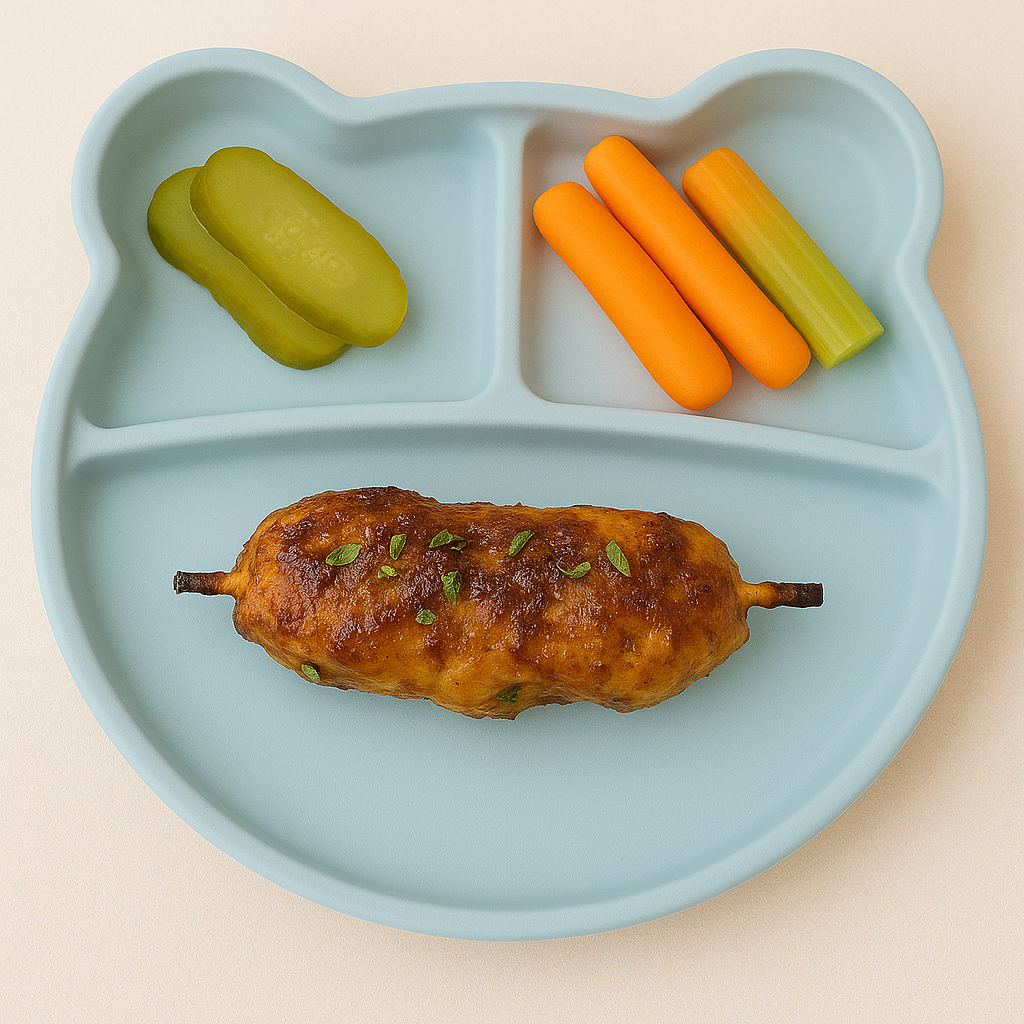

Skewers are such an obvious move for small children: handheld eating, soft and moist meat, endless adaptations. If you’ve mastered every meatball, played out every variation on ground beef possible, and/or are just dying to fire up the grill or broiler to make some meat, we’ve got you–and your skewers–covered with the cheap and easy approach that follows.
But, first, a question: what’s your flavor? Maybe you’re craving Pakistani seekh kabobs, Sichuan street meat, or Indonesian say; your child, though, may not be ready for spice-forward meat sticks. Shish kebab, at least as we know it in America, fits the plain-enough category; the size of the meat pieces, which tend to be thick and pretty cooked through, may make chewing difficult. Our solution? Go Japanese. Tsukune, as meatballs are called in Japan, checks off all the needs and wants: supple, with that characteristically deep but subtle flavor that comes from sesame oil, miso, and scallions; the sauce has a sweet and savory profile that is hard for a kid to stop eating. But, hey, you can also just coat the meatballs in any number of sauces: hoisin, teriyaki, barbecue, etc. See the ‘Adapt’ section for your options.
Check out our other great chicken recipes! Check out other ways to utilize leftover ground meat, too!
If you’re looking for the perfect way to serve protein-packed meals that toddlers will actually want to eat, these chicken skewers for kids are your new go-to. Inspired by Japanese tsukune (chicken meatballs), they’re soft, flavorful, and shaped for little hands. With mild seasonings like miso and sesame oil, these chicken skewers are designed to be gentle on young palates and easy to chew—making them a win at the dinner table or in the lunchbox.
These chicken skewers for kids are a fun, hands-on way to make mealtime more exciting while still nutritious.
Q: Are these skewers safe for toddlers?
A: Yes—use blunted or toddler-friendly skewers, or simply remove the skewer before serving. The texture of the meat is soft and perfect for early eaters.
Q: Can I leave out the miso?
A: You can! Miso adds a savory flavor, but it’s totally fine to replace it with a splash of soy sauce or leave it out for a more neutral version.
Q: What's the best cooking method for kid-friendly skewers?
A: Grilling gives them great texture, but baking or pan-searing also works well. Just make sure they're cooked through and golden.
Q: How should I store leftover skewers for kids?
A: Once cooked, you can refrigerate leftovers for up to 3 days. They’re great cold or quickly reheated in a pan or toaster oven.
These skewers for kids are a smart way to combine nutrition, fun, and ease in one family-friendly recipe. Whether you serve them at lunch, dinner, or stash them in a lunchbox, you’ll love how fast they come together—and how much your toddler enjoys them.
Chicken meatballs, a staple of Japanese yakitori, gets simplified and child friendly--without losing any of its deliciousness. Sweet, smoky, and meaty, these skewers come together quickly and will satisfy the whole family.
Let the skewers cool down before serving; otherwise, slide the chicken tube off the skewer and either break into small(er) pieces or spear with a fork so your child can eat the chicken from one end. Side with extra sauce (or another condiment.
If you have neither the time nor interest in making the sauce, you can sub in pretty much anything thick with some sugar in it: hoisin, teriyaki, barbecue sauce, etc. No skewers? No problem: form meat mixture into small and fat meatballs and cook for 2-3 minutes a side; glaze with sauce after the meatballs finish cooking.
Note: metal skewers work best here–they’re reusable and don’t burn–but you’ll need to hold off serving with them until they’ve cooled down. In a pinch, you can use wooden chopsticks, but be sure to soak them in water and wrap in foil so they don’t burn up.
If you’re having trouble turning the skewers over–whether because they’re fragile or because they’re sticking to the grates of your rack–try using a spatula to get underneath the meat and skewer; use your hands to turn the piece over.